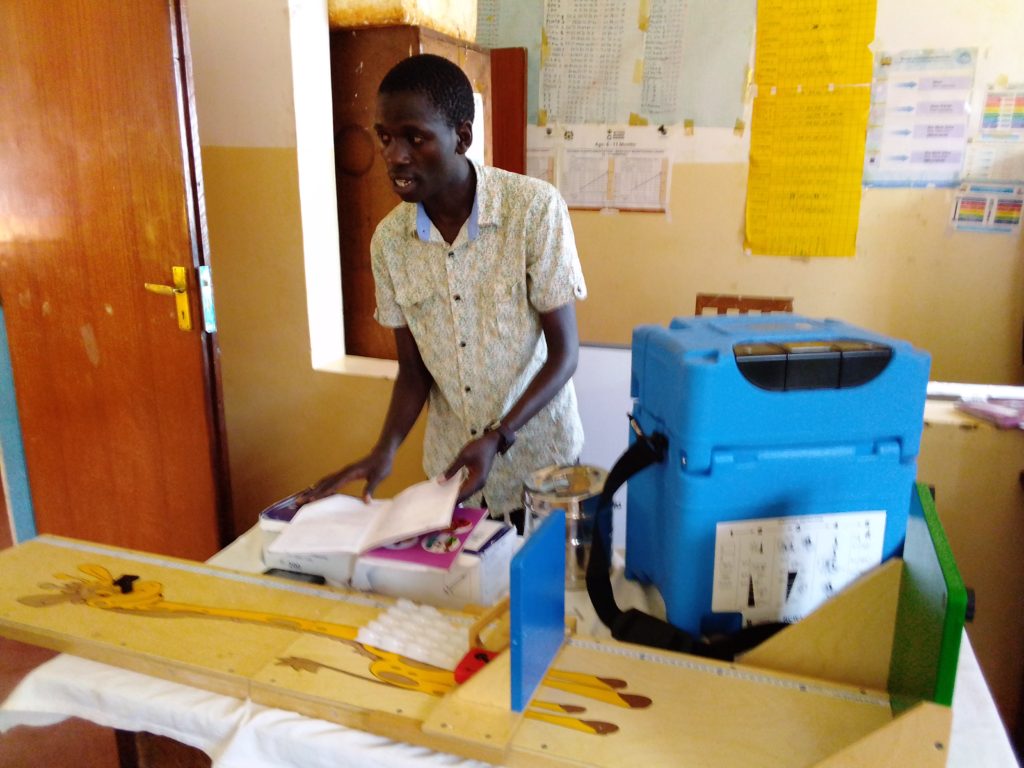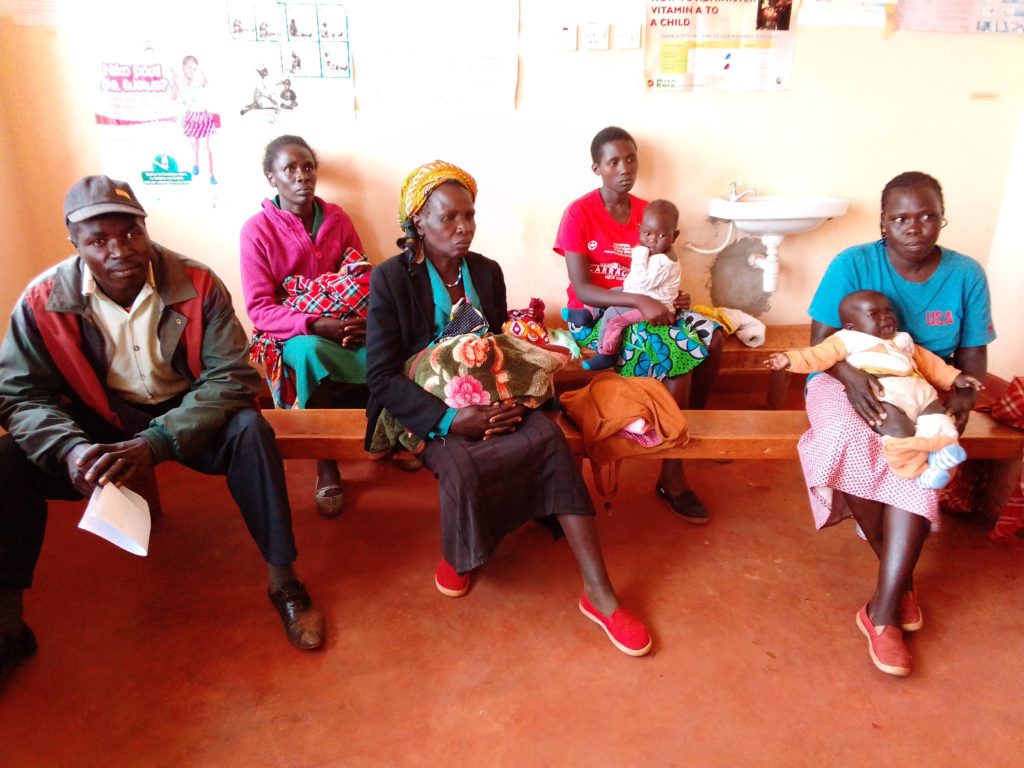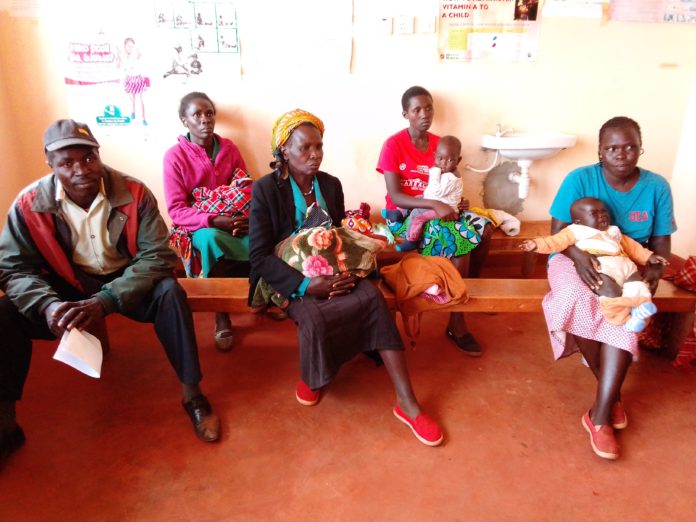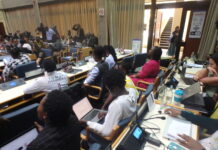By Pius Sawa
Mount Elgon, Kenya: A smooth eight and half hours road travel from the capital Nairobi to Misikhu market in western Kenya’s Bungoma County, leaves you tired and fatigued, but it is end of the public transport which leaves you with only one option of taking a motorcycle referred to as bodaboda to Kimilili town, about 25 minutes from Misikhu market.
At a V- junction is a stage of more than 50 bodaboda riders who will surround you, begging to take you to Kapsokwony market, about an hour away.
I tell them I am going to Kopsiro Model Health center, and everyone turns away. “I cannot travel there”, says one after another. Why? I ask them, they tell me Kopsiro is very far and one needs a powerful bike to reach there a 150cc engine.
Delivering vaccines, on a motorcycle, to such a remote health center, which serves over 30,000 people, is hectic. A child in Kopsiro does not enjoy the same privileges as a child in an urban center where a health facility is easily reachable through smooth roads and enough nurses and drugs.
I get Mark, a young smartly dressed man who agrees to take me. I ask how much he will charge me, “You sit and we go, I know we shall not fail to agree,” he says, but he has to add more petrol to his bike. “I had put for 200, but let me double it. I don’t want us to get stuck on those hills.”

The rough, dusty, bumpy road begins. Up and down, curving the steep hills and rolling down the valleys, we ride on. Holding tightly on the bike, Mark tells me to get closer to him to avoid the motorbike falling backward as we climb.
“When it rains, my friend, it is a disaster on this road”, Mark describes how the red volcanic soil turns into sticky mud that cannot allow movement. Good enough it is not a rainy season, so we have to brave the dust. That’s how difficult it is for the drugs and vaccines to be delivered to this region, especially when it rains.
After two hours of riding, with no chances of overtaking other motorbikes ahead, we reach Kopsiro market, a place with two retail shops, one small drug shop, a tiny restaurant and one old lady selling sugarcane and fruits at the entrance of Kopsiro Model Health center.
The health center is crowded with patients, mostly women, and children. I head straight to the Child Welfare Clinic where children are receiving vaccines. Outside, I meet two young boys, Joshua Kiptoo, ten years old accompanied by Brian 13. Joshua wants to be a soldier while Brian dreams of being a doctor.
Inside are mothers on wooden benches breastfeeding, some with newly born babies, others with their six months olds, while other children are staggering around the room learning to walk.
There is only one man, Robert Kimutai whose wife has just given birth to a baby boy. They have traveled over 12 kilometers from Kibura to come to the health center. Catherine Nekesa has accompanied her son and daughter- in- law to witness the safe delivery, and to be sure that the new baby is vaccinated.
“I have six children who are now mature. Robert is my last born and they were all vaccinated. I witnessed my uncle losing two children to measles. They denied her water because people believe that when one gets measles, he/she is not supposed to drink water.” She says the children died from dehydration, after developing a body rush that lasted for some days.

Kenya government recommends routine immunization from birth to 18 months against the deadly diseases which include tuberculosis, polio, measles, diphtheria, whooping cough, and tetanus.
Robert doesn’t want to see his children dying from vaccine-related diseases.
“This is my second child. I have seen children who are not vaccinated struggling a lot to live. They are always in and out of the hospital.”
His wife Aisha Kipkemoi fears her children getting polio, which she believes is caused by not vaccinating a child. “I saw a neighbor whose child had polio because she did not take him for vaccination. That is why I have to make sure all my children are brought to the clinic until they reach 18 months.”
At the same clinic is 57 year- old Evelyn Chewuno, a birth companion who was trained to help pregnant mothers seek health facilities and ensure the children are vaccinated. “There are many dangerous diseases these days. A child can get this disease which breaks the bones, polio. Secondly, a child can suddenly fall sick and when you come back home and find a child dead, you start wondering what killed the child,” says Evelyn.
One of the health targets for SDG-3 is by 2030, to end preventable deaths of newborns and children under age 5 with all countries aiming to reduce neonatal mortality to at least as low as 12 per 1,000 live births and under 5- mortality to at least as low as 25 per 1,000 live births.
According to Dorine Nininahazwe, the East Africa Director for ONE, the vaccine is a foundation for every child to be safeguarded from opportunistic sicknesses, as a healthy child gives parents time to be productive in society, which is good for a country’s economic development.
She says governments should allocate more funds towards vaccinations that will reach children in hardship areas and more sensitization is needed to remove negative misconceptions about vaccines.
“Some people still believe that vaccines are not that important, because they don’t see immediate benefits, but the long term impact will be felt. So it should be a global initiative. Governments should have more sensitization campaigns to educate their citizen and put in a lot of money to make vaccines available to children. In addition, there should be a policy that requires that all schools must ensure kids bring their vaccination cards in the first year of school.”
Dorine looks at another opportunity in the fight for a healthier population, which is the Global Alliance for Vaccines and Immunization (GAVI) replenishment, which takes place in June this year. “GAVI is a global health partnership of public and private sector organizations dedicated to immunization for all. It has been supporting our governments to vaccinate almost half the world’s children against deadly and debilitating infectious diseases,” said Dorine.
Challenges
According to UNICEF 2018 report, the under- 5 child mortality rate in Kenya was at 45.6 per 1,000 live births.
Kibet Kelvin Boiyo is a trained public health officer volunteering at Kopsiro Modern Health center for now 2 years. He is overwhelmed with the huge turn up of children who have come for vaccination especially on Mondays and Fridays. Drugs are always not available, so they come in big numbers once they learn that the vaccines have been brought.
“These mothers mobilize themselves. Yesterday we had more than 200 of them, and if you come on Friday, you will get more than 400. We receive the vaccines which can last about one month, and when they are out of stock, we can wait for up to three months.”
The vaccines are delivered on a motorbike from the sub-county stores; more than 55 kilometers away and they are always not enough, which has contributed to some of the children not getting all the vaccines, given the long distance they have to walk.
Naomi Koi has traveled 20 kilometers to come and deliver her third child at the health center, though she has to wait for long before her baby is vaccinated due to the long cue. “I have delivered safely, but the only problem I have seen here is the drugs are not enough and the nurses are few. I appeal to the government to bring more nurses to Kopsiro. Let there be drugs because sometimes you come and you are told there are no drugs, go and buy. Maybe you are seriously sick and the nearest pharmacy is more than 50 kilometers away. By the time you reach Chwele, somebody will be dead.”
From 2015, Kopsiro health center, mobilized support from the county government, the national government, and international organizations like AMREF, WHO, Save the Children to increase awareness on child vaccination and safe delivery. A total of 23 traditional birth attendants and 10 community health volunteers were given a five days training, to reach out to hardship areas.
This has helped reduce the deaths of children from 8.2 % to 2 %, according to Herbert Ogoti, the nurse in charge at Kopsiro health center. The center registers at least 920 children every month, who come for vaccination.
“Vaccination is good because so many children became lame due to lack of vaccination, but now the number is not that big, just one case here and there deep in the remote villages where there is lack of awareness. Most men are still in darkness. They don’t know about vaccination; once the mother gets a baby, they go on with their business,” says Emily Kiptoo, working at the Health Center as a casual laborer, assisting nurses in the labor section.
She urges men to always follow their wives to the clinic and be supportive in case mothers develop complications. “When we go deep in those villages, we shall sensitize them to understand the need to vaccinate children and witness how the vaccines are administered.”














